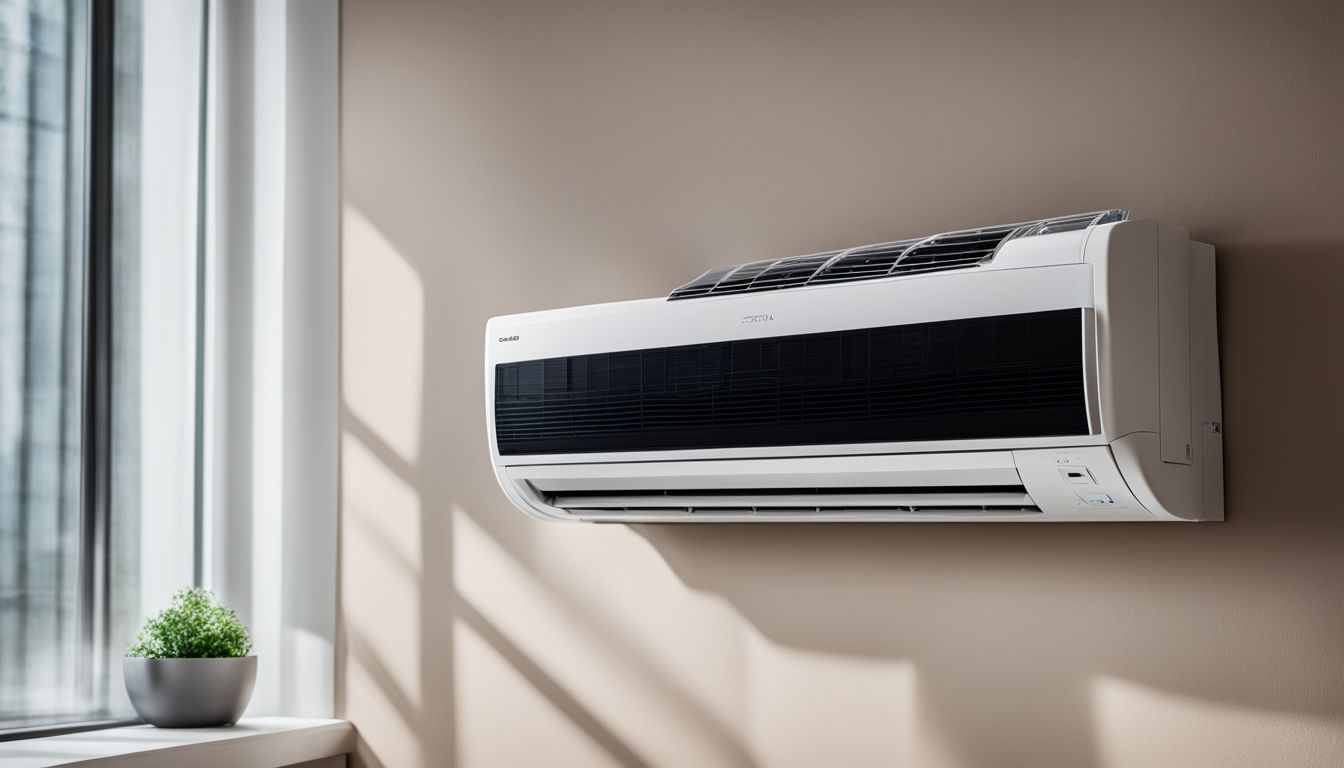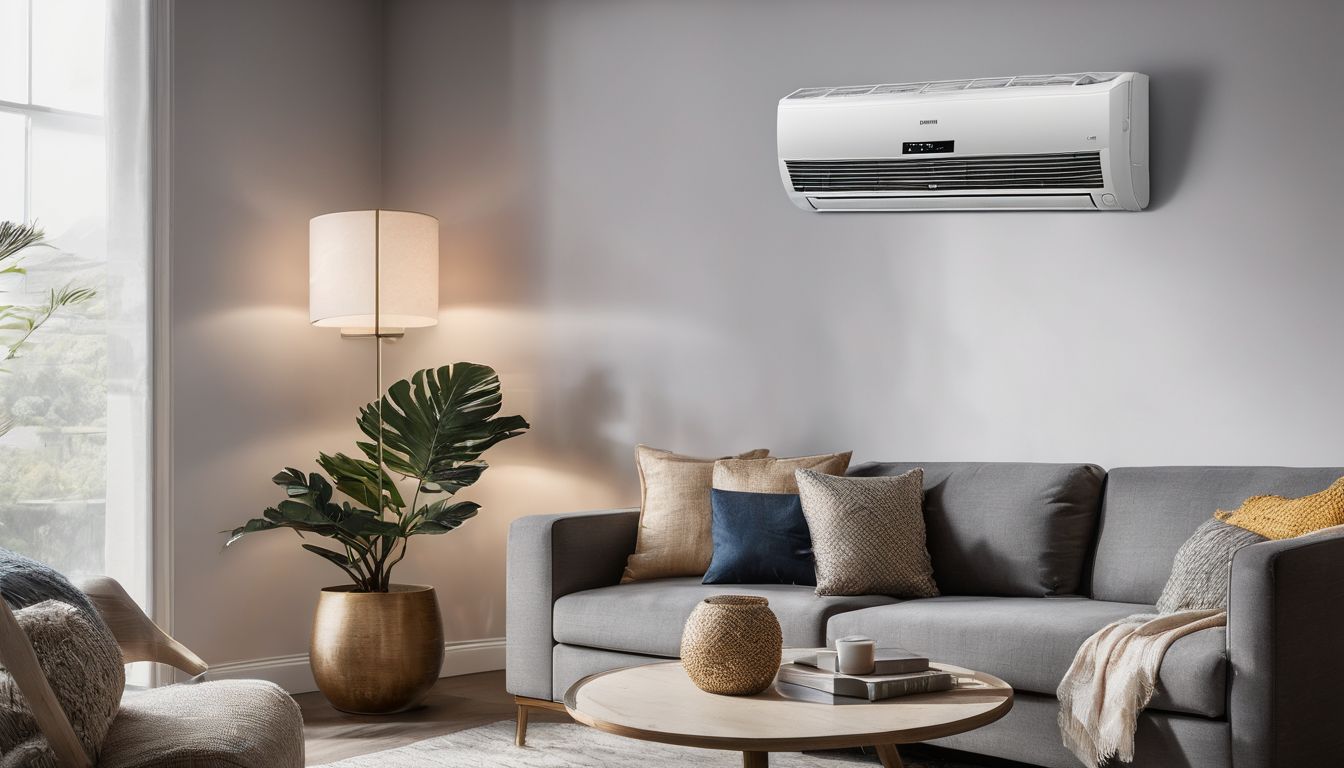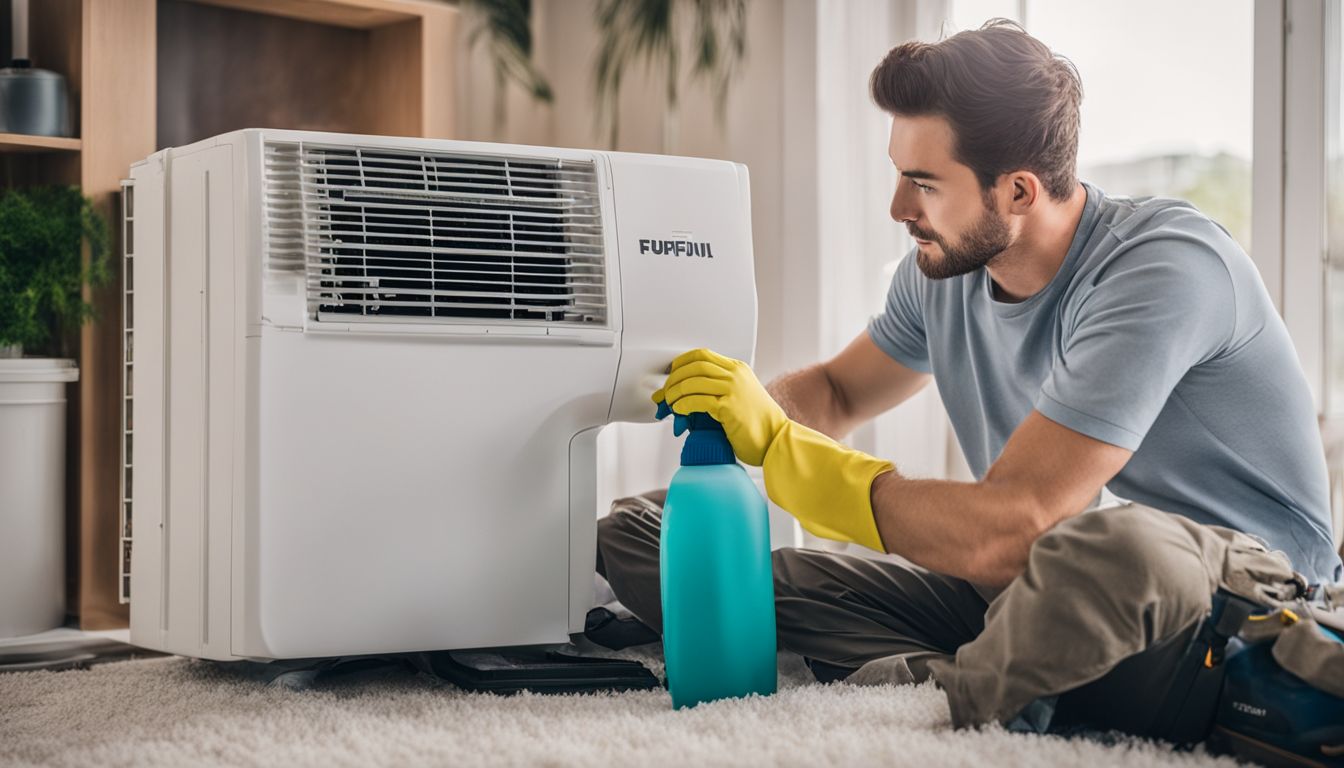Are you wondering why some rooms in your home feel stuffier than others, despite the air conditioning running? Aircon vents are a key player in keeping our indoor spaces comfortable and well-ventilated.
This article will dive into their essential function, ensuring efficient operation of your heating and cooling systems, maintaining pressure balance, and providing cleaner air. Discover the secrets to a fresher home as we explore the world of aircon vents—read on for cooler insights!
Understanding an Aircon Vent
Aircon vents are essential components of any HVAC system, regulating the flow of air into and out of a room. They come in various sizes and shapes, but their main job is to deliver conditioned air from the air conditioner into your living space.
These vents ensure that fresh air circulates properly throughout indoor environments, helping to maintain a comfortable temperature.
These cleverly designed vents also play a significant role in energy efficiency. They help balance the indoor climate by controlling how much hot or cold air enters an area. Proper use of these vents can lead to reduced energy consumption as they assist in maintaining steady temperatures without overburdening the heating or cooling systems within your home.
Importance of Aircon Vents
Aircon vents are critical components in maintaining efficient and effective climate control within indoor environments. They play an essential role in delivering comfort, preserving air quality, and optimising energy usage throughout various spaces.
Maintaining Air Pressure
Maintaining balanced air pressure is key to a comfortable and healthy indoor environment. If the pressure becomes too low or too high, it can lead to various problems such as drafts, increased energy bills and uneven temperature distribution.
Regular checks of your HVAC system ensure that air flows properly through your home. They prevent issues like dampness which can cause mould growth.
Proper insulation also plays a significant role in maintaining steady air pressure within buildings. It helps keep warm air from leaking out during winter months and hot air from seeping in during summer, making climate control more efficient.
Remember to periodically inspect vents for blockages that might disrupt airflow; keeping them clear ensures each room receives its fair share of heating or cooling. This attention to detail contributes substantially to optimising indoor air quality and reducing unnecessary strain on HVAC equipment, leading to energy savings over time.
Improving Aircon Performance and Reducing Energy Consumption
Keeping your air conditioner vents clean and unblocked is crucial for enhancing the performance of your aircon system. Dirt and debris can clog up the filters, putting extra strain on the unit and making it work harder than necessary.
By regularly replacing or cleaning these filters, you ensure that airflow remains steady and efficient. This simple step not only improves cooling efficiency but also slashes energy consumption, leading to lower electricity bills.
Optimising your HVAC system includes regular maintenance checks beyond just filter care. Scheduling professional assessments can detect issues like leaks in ductwork or problems with fan coil units before they worsen.
Technicians might recommend upgrades such as smart thermostats or energy-saving technologies to fine-tune temperature maintenance further while keeping power usage in check. Embracing these strategies plays a vital role in cutting down emissions and achieving better indoor climate control without overburdening our planet or your wallet.
Filtering Out Debris and Preserving Air Quality
Air vents in your air conditioning system aren’t just there for show; they act as gatekeepers, ensuring that the air you breathe is free from pollutants and debris. Equipped with filters, these vents trap dirt, dust, and other unwanted particles before they can enter your living space.
This barrier keeps the indoor air quality high and creates a healthier environment for everyone inside.
Changing the filters regularly in your HVAC unit plays a big part in this process. Over time, filters get clogged with all sorts of grime which can obstruct airflow and reduce efficiency.
A clean filter means your heater or air conditioner doesn’t have to work overtime to circulate air through dirty blockages, saving energy and protecting you from breathing in harmful contaminants like pollen or mould spores.
It’s essential for both maintaining the performance of your climate-controlled havens and safeguarding against poorer air quality that might aggravate allergies or respiratory issues.
Identifying and Addressing a Faulty Aircon Vent

To spot a faulty aircon vent, check for reduced airflow or an unexpected change in room temperature. Blocked vents often cause your air conditioning system to work harder than it should, hiking up energy bills and potentially leading to more significant issues.
Look closely at the vent itself; dust build-up or foreign objects could be clogging the pathway. Regular cleaning of these vents is essential to prevent blockages that can affect overall efficiency.
Fixing these problems might involve replacing the air filters if they are dirty, as this is a common culprit for obstructed airflow. Sometimes ductwork may have become disconnected or damaged, requiring professional attention to repair and reseal any leaks.
Proper maintenance of HVAC systems includes checking for mould growth or debris inside the ventilation system that can impede performance and degrade indoor air quality (IAQ). Ensure all components, like evaporator coils and heat pumps within your central air unit, receive periodic inspections by certified HVAC technicians to keep your system running smoothly and efficiently.
Conclusion
Understanding how aircon vents function unlocks the door to enhanced home comfort and energy efficiency. These crucial components not only regulate indoor climate but also ensure that the air we breathe is clean and safe, contributing significantly to our overall well-being.
Streamlining this aspect of your heating and cooling system could lead to substantial reductions in energy consumption, lowering household bills while preserving environmental health.
Explore further guidance or seek professional advice for optimal performance and maintenance of your air conditioning systems. Remember, properly managed airflow brings more than just thermal comfort; it signifies a healthier lifestyle within our living spaces.
FAQs
1. What do aircon vents do in my home?
Aircon vents play a crucial role in heating and air conditioning systems by directing cool or warm air from your central air conditioning unit to different rooms, ensuring thermal comfort throughout your space.
2. Can adjusting the vents help reduce energy consumption?
Yes, properly managing the ventilation systems, such as closing or opening air ducts with variable air volume controls, can greatly improve energy conservation measures and lower your bills.
3. How does dehumidification work with my air conditioner?
Your air conditioning system helps control humidity levels; it removes excess moisture from the indoor atmosphere for more comfortable living conditions and prevents the growth of mould caused by dampness.
4. Why is it important to have clean filters in my HVAC ducts?
Having clean filters is vital for good indoor quality; they trap dust, pollution, volatile organic compounds (VOCs), and other particles before they circulate through your air handling units into your home.
5. Will installing heat recovery technology in my AC make it more efficient?
Absolutely! Heat recovery systems capture wasted heat from exhaust gases to preheat incoming fresh airflow which significantly boosts efficiency and reduces energy consumption of heating and cooling equipment.
6. Is there a difference between mechanical ventilation and natural ventilation?
Mechanical ventilation uses fans or blowers within heating, ventilating, and sometimes even portable air conditioners while natural ventilation relies on passive airflow through windows or openings without machines – each has its benefits for maintaining fresh filtered indoor atmospheres.





